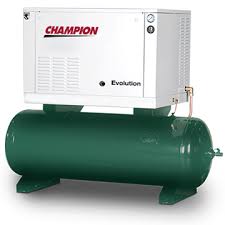
Some of our clients keep their compressed air systems in pristine condition. Others would be horrified if they shut down their workspace for 12 hours and went around listening for leaks. Others could do that and their team would shrug.
I hope you and I are on the same page about this – we can’t really afford to be wasting money in this day and age. Competition is fiercer than ever and every cent wasted in inefficient operation could be the difference between life and death.
Some of our clients waste thousands of dollars a year with an inefficient air system
With that in mind I thought I’d share with you just what can be done to improve your air compressor’s efficiency so that you can free up some more money and either put it in the bank or use it to make your operation even more efficient.
Fix Your Leaks.
Honestly, I can’t stress this enough. If your air system is leaking it is money down the toilet. To make it more real – go to the bank take out $1,000. Go to the nearest bathroom, rip up the money drop it in the bowl and flush.
You wouldn’t do that. So why wouldn’t you fix the leaks?
70% of the total lifetime costs of your air compressor is electricity and in a typical industrial installation up to 30% of the energy consumed is wasted – it sounds expensive and it is.
The cost of a single of your compressed air, that you just spent electricity to produce, can run between $200 and $2,000 per year.
Get Your Drains Right.
If you are still using the older condensate drains – especially the mechanical types – remember they are going to leak. And leaks should be fixed. They often end up discharging a lot of compressed air when they discharge the condensate.
Smarter drains discharge on a timer. They open for 10 seconds every 5 minutes. But the problem is that they do this even if there is no water to discharge (or not enough water to discharge for the full 10 seconds). If there is air coming out, it’s a leak – costing you money.
Compressed air is expensive and both mechanical drains & ‘smart’ drains leak. Think about the number of drains in your system.
It’s time to switch to “zero loss” drains. They only discharge water. The capital cost to put these in is fractional compared to the costs of air leaks.
Eliminate Pressure Drops
Pressure drops are when compressed air flows through a restriction in your system and is the difference in pressure before and after the restriction. They only occur when air is flowing through your system.
You can measure your pressure drops only when your air is flowing; the more air flowing the more obvious the pressure drop. You need a measurement of air pressure at your air compressor and at your end use machine(s).
If you can reduce the pressure drop by one psi, in many systems that could be a savings of $100’s of dollars per year depending on the size and number of air compressors you are running.
If you need some help identifying how you can optimize your compressed air system, give the team at Pye-Barker a call on 404-363-6000 or email sales@pyebarker.com we’ll conduct a no cost no obligation analysis of your system.


